Summer/Fall 2007:
A set of Swedish pipes.
This set is long overdue - it was to be a birthday/Xmas present last year for Darren G., but what can you do? Anyway, i'm glad to be working on it, and looking forward to having them around!
Traditionally the säckpipa would be made of some Nordic hardwood like ash or birch, but i'll be making this set in Oregon myrtle wood. It's a pretty wood, not too dissimilar looking from the various Nordic woods, but is rather more dense and stable. Also i just happen to have a big block of it in the shop - i've had high hopes for it since i live on Myrtle Avenue.
These pipes would also traditionally be mouthblown, but neither Darren nor myself are interested in futzing around with moisture in pipes, so this set will be bellows blown.
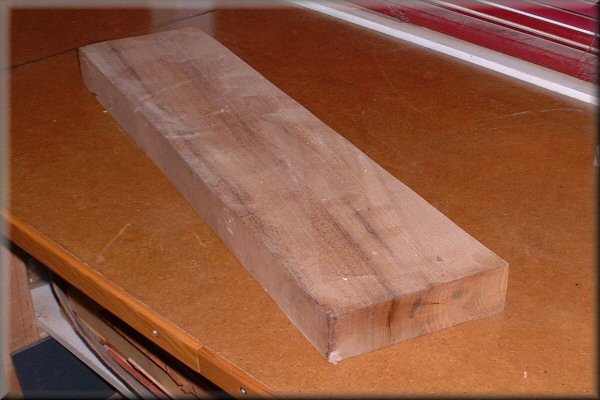 |
(29 July 2007) I love doing these "before" pictures. Here is a block of Oregon myrtle which i bought on eBay a couple of years ago. Originally it was going to be used for a crumhorn project, since it's apparently farily easy to bend. That project didn't end up happening, and i think this wood will make a pretty säckpipa... |
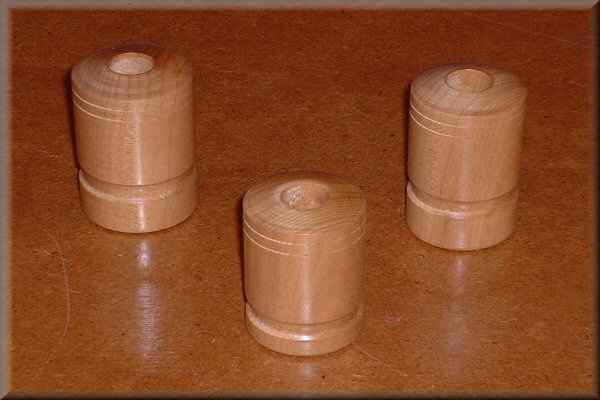 |
(29 July) Again starting with the easy bits, especially when i'm using a wood i haven't used before. The säckpipa is certainly the simplest pipe i've built so far - one chanter, one drone, and a blowpipe, each with a single stock. |
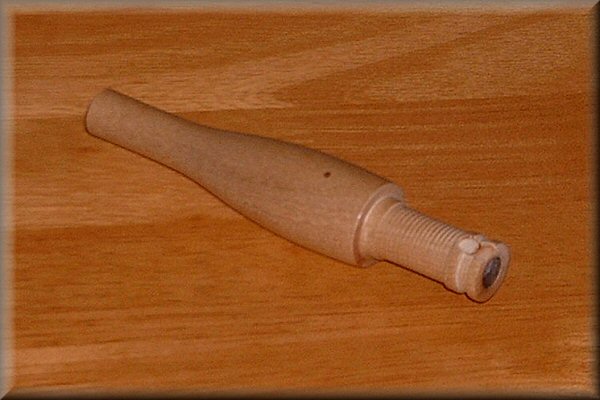 |
(6 Aug) Here's the blowpipe. The lines on these pipes are really simple, no frills or decorations at all. As usual, i've inlaid a brass dot to show which way is up so the valve hangs down. |
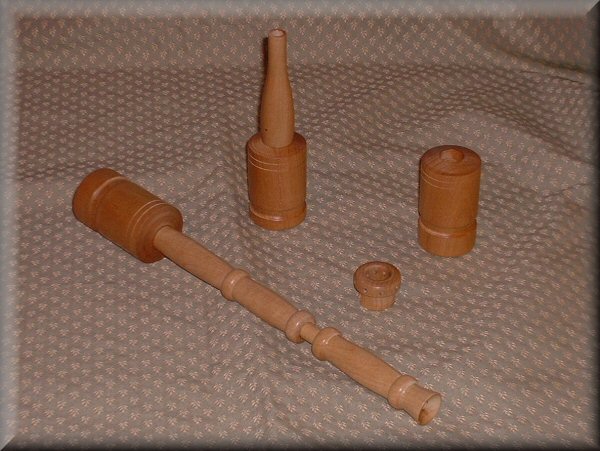 |
(18 Sept) Ok, about time for an update. Here's the drone, and the matching bellows inlet valve.
The backdrop is the fabric that Darren chose for the bag cover and bellows cushions. It's greener than it looks in the photo, with little gold leaves. It's got a certain old-world charm; i think it'll make for a sweet looking pipe. |
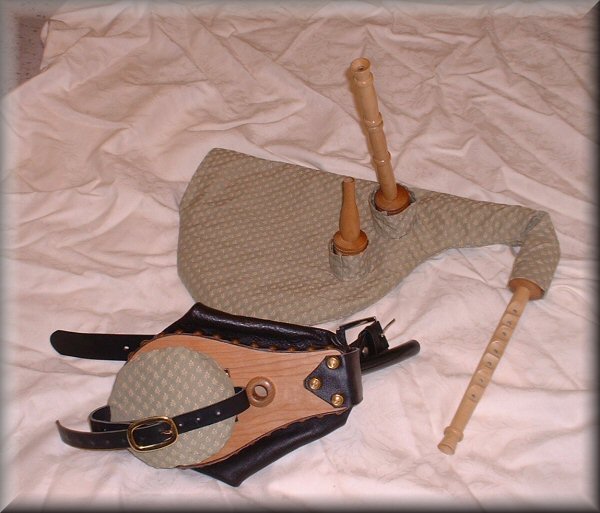 |
(14 Oct) That's all the construction completed! Next up are the reeds and fine tuning. Never having played a säckpipa, much less reeded one, i have no idea how difficult a job this is going to be. I've heard that composite reeds can work in these chanters, so i'm hoping to go that route. |
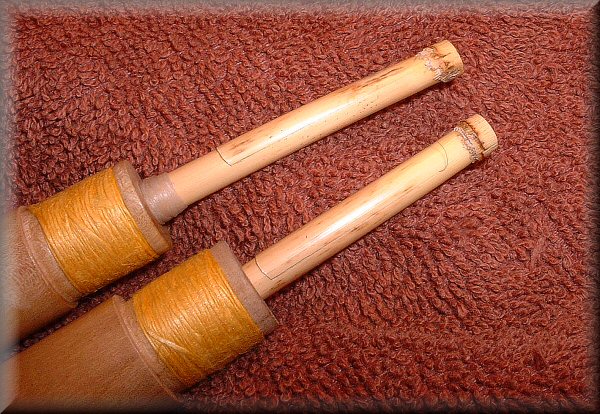 |
(26 Nov) After a little research and experimentation, i ended up going with normal cane reeds. These are Spanish cane (Arundo donax) and are reverse cut, with the free end of the tongue toward the pipe. Making and using a single reed for a chanter is very different from what i'm used to, but it didn't seem too hard to get it to play.
Listen to a sound sample... |
Last updated on 26 Nov 2007, by Penny.
Back to the index page





